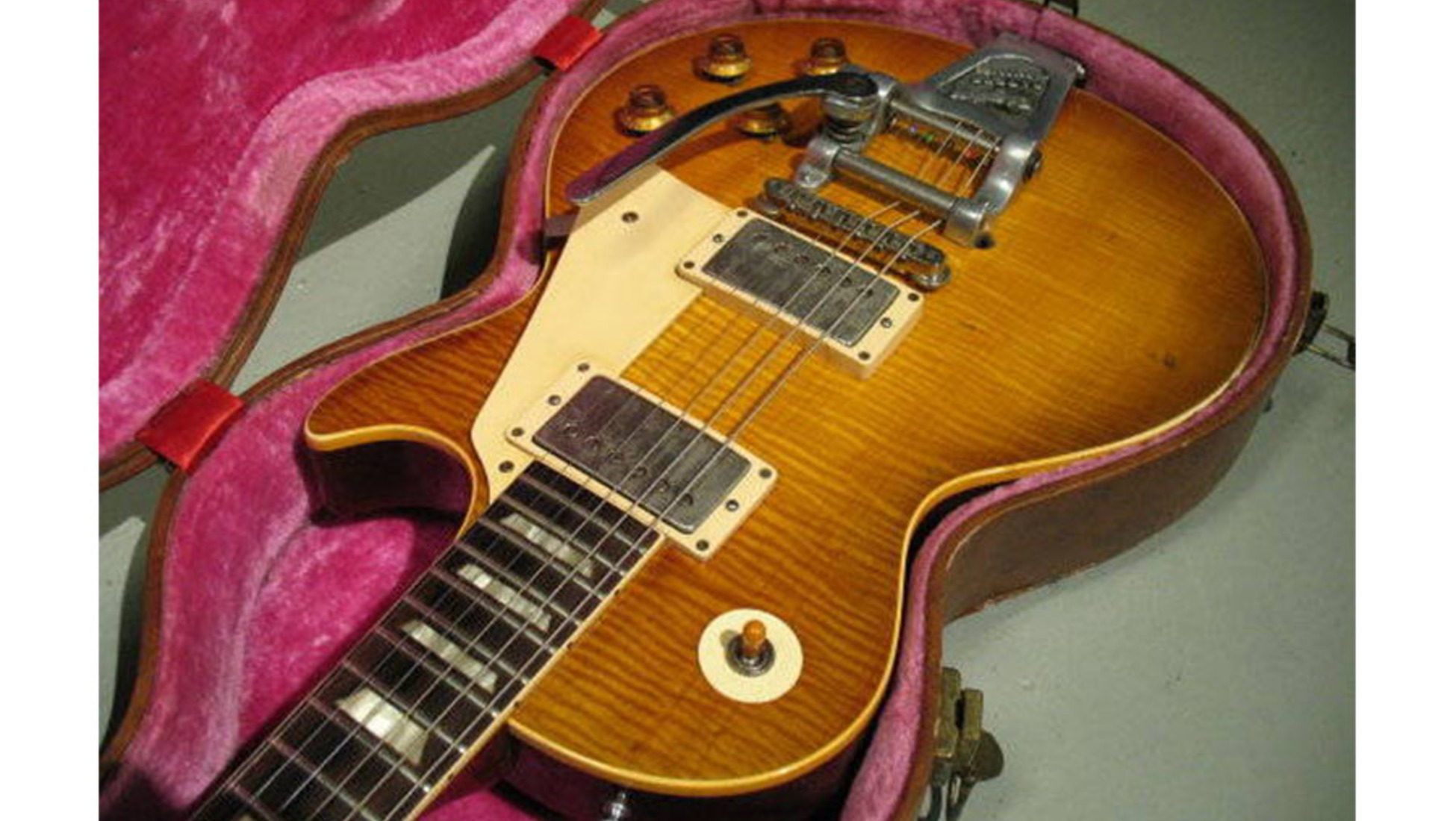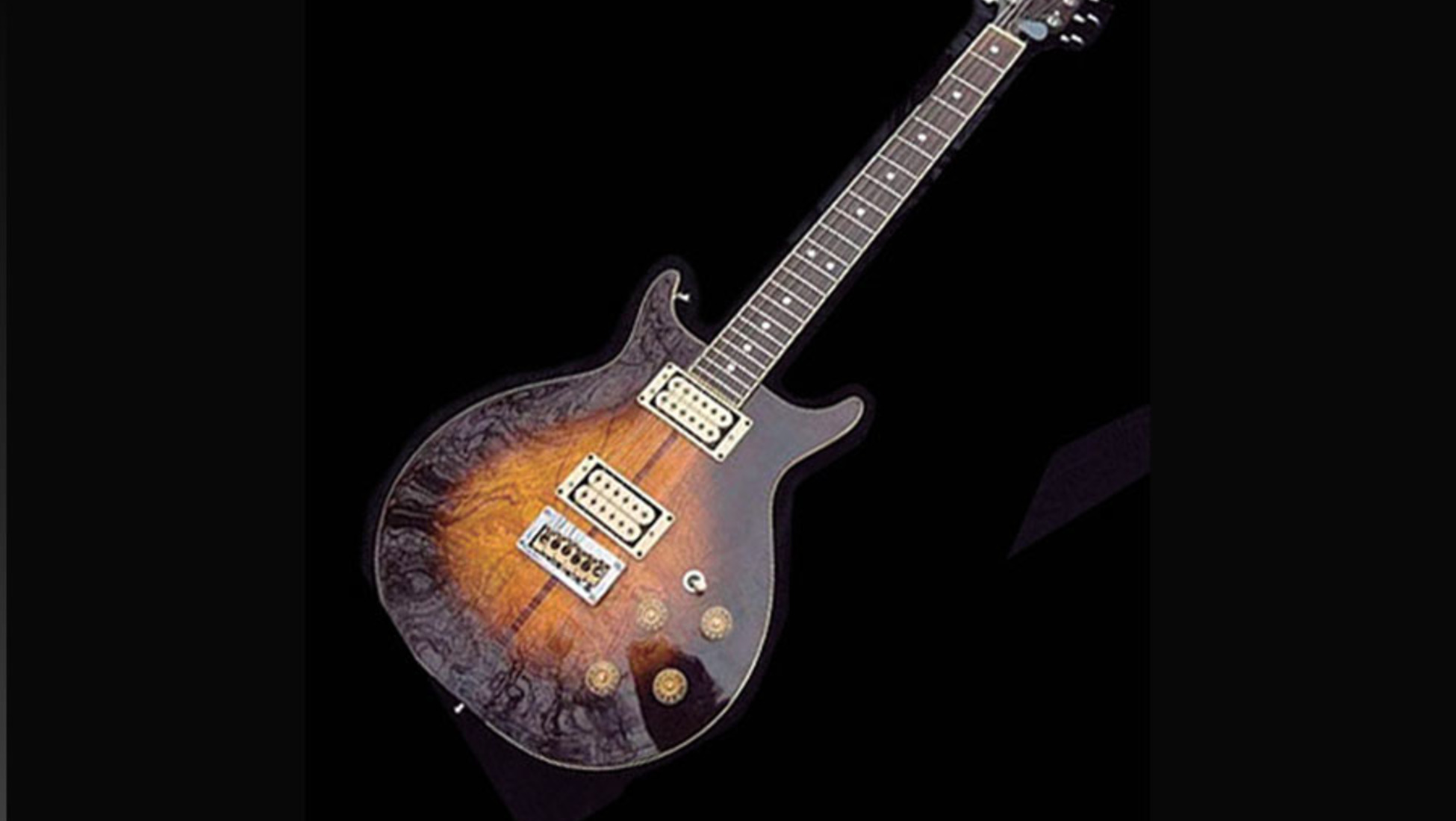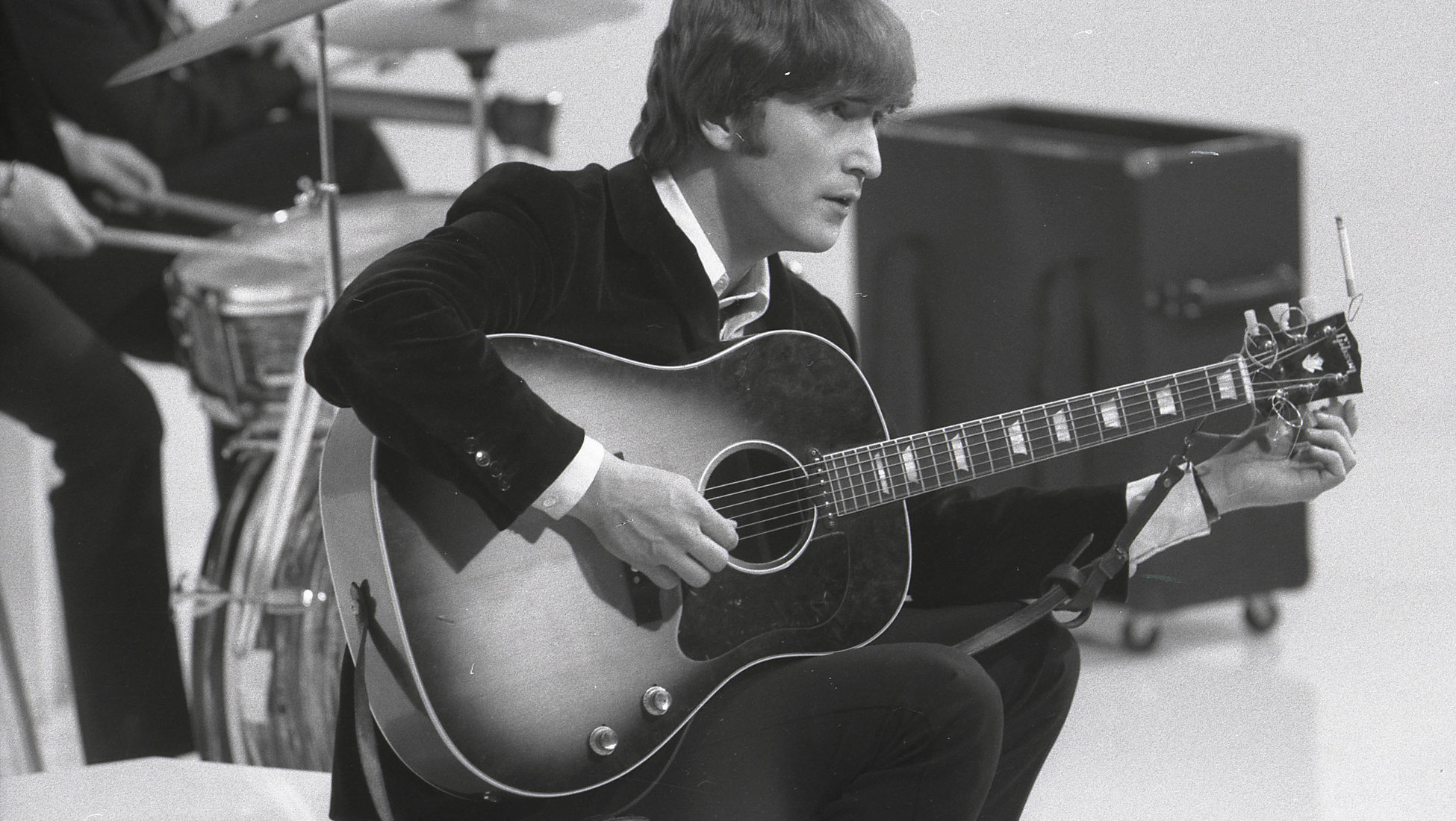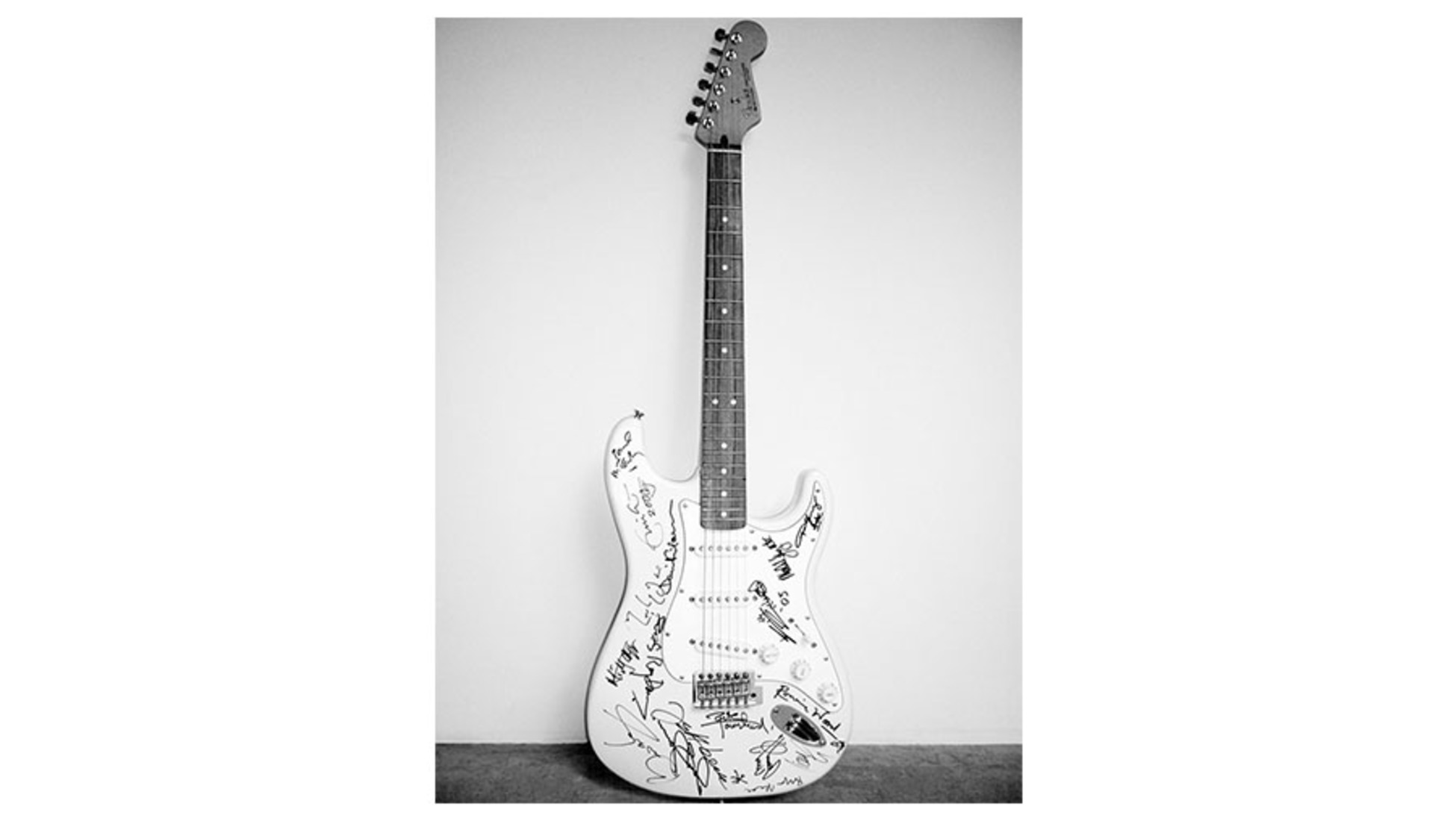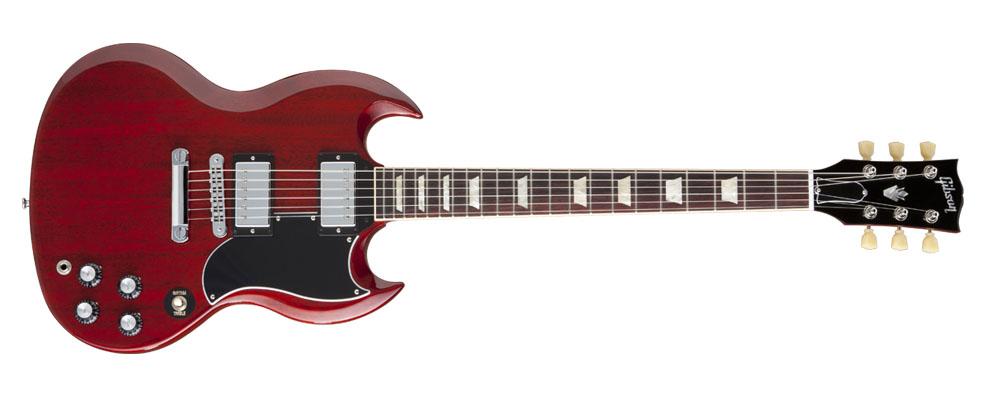A Brief History of the Guitar
by Paul Guy

The guitar is an ancient and noble instrument, whose history can be traced back over 4000 years. Many theories have been advanced about the instrument's ancestry. It has often been claimed that the guitar is a development of the lute, or even of the ancient Greek kithara. Research done by Dr. Michael Kasha in the 1960's showed these claims to be without merit. He showed that the lute is a result of a separate line of development, sharing common ancestors with the guitar, but having had no influence on its evolution. The influence in the opposite direction is undeniable, however - the guitar's immediate forefathers were a major influence on the development of the fretted lute from the fretless oud which the Moors brought with them to to Spain.
 The sole "evidence" for the kithara theory is the similarity between
the greek word "kithara" and the Spanish word "quitarra". It is hard to
imagine how the guitar could have evolved from the kithara, which was a
completely different type of instrument - namely a square-framed lap
harp, or "lyre". (Right)
The sole "evidence" for the kithara theory is the similarity between
the greek word "kithara" and the Spanish word "quitarra". It is hard to
imagine how the guitar could have evolved from the kithara, which was a
completely different type of instrument - namely a square-framed lap
harp, or "lyre". (Right)It would also be passing strange if a square-framed seven-string lap harp had given its name to the early Spanish 4-string "quitarra". Dr. Kasha turns the question around and asks where the Greeks got the name "kithara", and points out that the earliest Greek kitharas had only 4 strings when they were introduced from abroad. He surmises that the Greeks hellenified the old Persian name for a 4-stringed instrument, "chartar". (See below.)
The Ancestors
 The earliest stringed instruments known to archaeologists are bowl harps and tanburs.
Since prehistory people have made bowl harps using tortoise shells and
calabashes as resonators, with a bent stick for a neck and one or more
gut or silk strings. The world's museums contain many such "harps" from
the ancient Sumerian, Babylonian, and Egyptian civilisations. Around
2500 - 2000 CE more advanced harps, such as the opulently carved
11-stringed instrument with gold decoration found in Queen Shub-Ad's
tomb, started to appear.
The earliest stringed instruments known to archaeologists are bowl harps and tanburs.
Since prehistory people have made bowl harps using tortoise shells and
calabashes as resonators, with a bent stick for a neck and one or more
gut or silk strings. The world's museums contain many such "harps" from
the ancient Sumerian, Babylonian, and Egyptian civilisations. Around
2500 - 2000 CE more advanced harps, such as the opulently carved
11-stringed instrument with gold decoration found in Queen Shub-Ad's
tomb, started to appear.
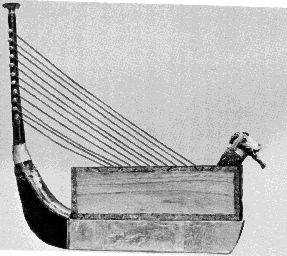
"Queen Shub-Ad's harp" (from the Royal Cemetery in Ur)

Egyptian wall painting, Thebes, 1420 BCE
Archaeologists have also found many similar relics in the ruins of the ancient Persian and Mesopotamian cultures. Many of these instruments have survived into modern times in almost unchanged form, as witness the folk instruments of the region like the Turkish saz, Balkan tamburitsa, Iranian setar, Afghan panchtar and Greek bouzouki.
The oldest preserved guitar-like instrument
 At 3500 years old, this is the ultimate vintage guitar! It belonged to
the Egyptian singer Har-Mose. He was buried with his tanbur close to the
tomb of his employer, Sen-Mut, architect to Queen Hatshepsut, who was
crowned in 1503 BCE. Sen-Mut (who, it is suspected, was far more than
just chief minister and architect to the queen) built Hatshepsuts
beautiful mortuary temple, which stands on the banks of the Nile to this
day.
At 3500 years old, this is the ultimate vintage guitar! It belonged to
the Egyptian singer Har-Mose. He was buried with his tanbur close to the
tomb of his employer, Sen-Mut, architect to Queen Hatshepsut, who was
crowned in 1503 BCE. Sen-Mut (who, it is suspected, was far more than
just chief minister and architect to the queen) built Hatshepsuts
beautiful mortuary temple, which stands on the banks of the Nile to this
day. 
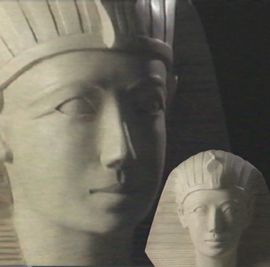 Queen Hatshepsut
Queen HatshepsutWhat is a guitar, anyway?
 To distinguish guitars from other members of the tanbur family, we need
to define what a guitar is. Dr. Kasha defines a guitar as having "a
long, fretted neck, flat wooden soundboard, ribs, and a flat back, most
often with incurved sides" .
To distinguish guitars from other members of the tanbur family, we need
to define what a guitar is. Dr. Kasha defines a guitar as having "a
long, fretted neck, flat wooden soundboard, ribs, and a flat back, most
often with incurved sides" .The oldest known iconographical representation of an instrument displaying all the essential features of a guitar is a stone carving at Alaca Huyuk in Turkey, of a 3300 year old Hittite "guitar" with "a long fretted neck, flat top, probably flat back, and with strikingly incurved sides".

The Lute (Al'ud, Oud)
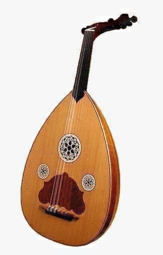
The Moors brought the oud to Spain. The tanbur had taken another line of development in the Arabian countries, changing in its proportions and remaining fretless.
The Europeans added frets to the oud and called it a "lute" - this derives from the Arabic "Al'ud" (literally "the wood"), via the Spanish name "laud".
A lute or oud is defined as a "short-necked instrument with many strings, a large pear-shaped body with highly vaulted back, and an elaborate, sharply angled peghead".
Renaissance lute by Arthur Robb

Click on the picture to go to Art's website.
Beautiful instruments!
It is hard to see how the guitar - with "a long, fretted neck, flat wooden soundboard, ribs, and a flat back, most often with incurved sides" - could possibly have evolved from the lute, with its "short neck with many strings, large pear-shaped body with highly vaulted back, and elaborate, sharply angled peghead".
The Guitar
The name "guitar" comes from the ancient Sanskrit word for "string" - "tar". (This is the language from which the languages of central Asia and northern India developed.) Many stringed folk instruments exist in Central Asia to this day which have been used in almost unchanged form for several thousand years, as shown by archeological finds in the area. Many have names that end in "tar", with a prefix indicating the number of strings: Dotar two = Sanskrit "dvi" - modern Persian "do" -
two = Sanskrit "dvi" - modern Persian "do" -dotar, two-string instrument found in Turkestan
three = Sanskrit "tri" - modern Persian "se" -
setar, 3-string instrument, found in Persia (Iran),
(cf. sitar, India, elaborately developed, many-stringed)
four = Sanskrit "chatur" - modern Persian "char" -
chartar, 4-string instrument, Persia (most commonly known as "tar" in modern usage)
(cf. quitarra, early Spanish 4-string guitar,
modern Arabic qithara, Italian chitarra, etc)
five = Sanskrit "pancha" - modern Persian "panj" -
panchtar, 5 strings, Afghanistan
Indian Sitar
 The Indian sitar almost certainly took its name from the Persian setar,
but over the centuries the Indians developed it into a completely new
instrument, following their own aesthetic and cultural ideals.
The Indian sitar almost certainly took its name from the Persian setar,
but over the centuries the Indians developed it into a completely new
instrument, following their own aesthetic and cultural ideals.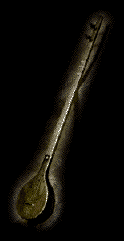
Chartar ("Tar")
 Tanburs and harps spread around the ancient world with travellers, merchants and seamen. The four-stringed Persian chartar
(note the narrow waist!) arrived in Spain, where it changed somewhat in
form and construction, acquired pairs of unison-tuned strings instead
of single strings and became known as the quitarra or chitarra.
Tanburs and harps spread around the ancient world with travellers, merchants and seamen. The four-stringed Persian chartar
(note the narrow waist!) arrived in Spain, where it changed somewhat in
form and construction, acquired pairs of unison-tuned strings instead
of single strings and became known as the quitarra or chitarra.From four-, to five-, to six-string guitar
 As we have seen, the guitar's ancestors came to Europe from Egypt and
Mesopotamia. These early instruments had, most often, four strings - as
we have seen above, the word "guitar" is derived from the Old Persian
"chartar", which, in direct translation, means "four strings". Many such
instruments, and variations with from three to five strings, can be
seen in mediaeval illustrated manuscripts, and carved in stone in
churches and cathedrals, from Roman times through till the Middle Ages.
Right: Roman "guitar", c:a 200 CE.
As we have seen, the guitar's ancestors came to Europe from Egypt and
Mesopotamia. These early instruments had, most often, four strings - as
we have seen above, the word "guitar" is derived from the Old Persian
"chartar", which, in direct translation, means "four strings". Many such
instruments, and variations with from three to five strings, can be
seen in mediaeval illustrated manuscripts, and carved in stone in
churches and cathedrals, from Roman times through till the Middle Ages.
Right: Roman "guitar", c:a 200 CE.Mediaeval psalter, c:a 900 CE.
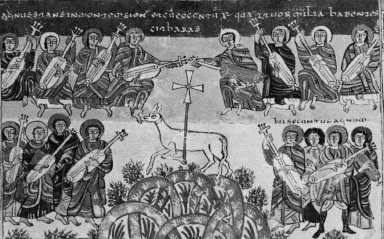
Angel with guitar, St. Stephen's church, 1591.

 By the beginning of the Renaissance, the four-course (4 unison-tuned
pairs of strings) guitar had become dominant, at least in most of
Europe. (Sometimes a single first string was used.) The earliest known
music for the four-course "chitarra" was written in 16th century Spain.
The five-course guitarra battente (left) first appeared in Italy at
around the same time, and gradually replaced the four-course instrument.
The standard tuning had already settled at A, D, G, B, E, like the top
five strings of the modern guitar.
By the beginning of the Renaissance, the four-course (4 unison-tuned
pairs of strings) guitar had become dominant, at least in most of
Europe. (Sometimes a single first string was used.) The earliest known
music for the four-course "chitarra" was written in 16th century Spain.
The five-course guitarra battente (left) first appeared in Italy at
around the same time, and gradually replaced the four-course instrument.
The standard tuning had already settled at A, D, G, B, E, like the top
five strings of the modern guitar.In common with lutes, early guitars seldom had necks with more than 8 frets free of the body, but as the guitar evolved, this increased first to 10 and then to 12 frets to the body.

5-course guitar by Antonio Stradivarius, 1680
A sixth course of strings was added to the Italian "guitarra battente" in the 17th century, and guitar makers all over Europe followed the trend. The six-course arrangement gradually gave way to six single strings, and again it seems that the Italians were the driving force. (The six-string guitar can thus be said to be a development of the twelve-string, rather than vice versa, as is usually assumed.)
In the transition from five courses to six single strings, it seems that at least some existing five-course instruments were modified to the new stringing pattern. This was a fairly simple task, as it only entailed replacing (or re-working) the nut and bridge, and plugging four of the tuning peg holes. An incredibly ornate guitar by the German master from Hamburg, Joakim Thielke (1641 - 1719), was altered in this way. (Note that this instrument has only 8 frets free of the body.)

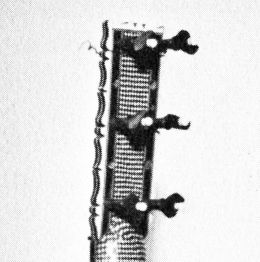
At the beginning of the 19th century one can see the modern guitar beginning to take shape. Bodies were still fairly small and narrow-waisted.
6-string guitar by George Louis Panormo, 1832
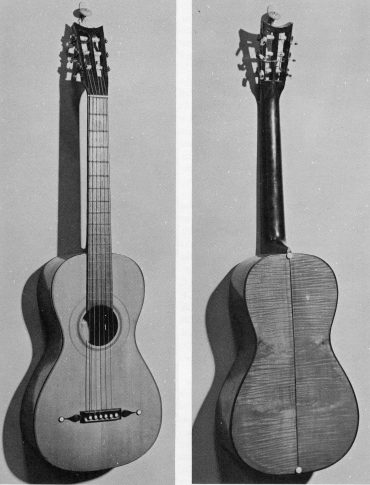
The modern "classical" guitar took its present form when the Spanish maker Antonio Torres increased the size of the body, altered its proportions, and introduced the revolutionary "fan" top bracing pattern, in around 1850. His design radically improved the volume, tone and projection of the instrument, and very soon became the accepted construction standard. It has remained essentially unchanged, and unchallenged, to this day.
Guitar by Antonio Torres Jurado, 1859

Steel-string and electric guitars
At around the same time that Torres started making his breakthrough fan-braced guitars in Spain, German immigrants to the USA - among them Christian Fredrich Martin - had begun making guitars with X-braced tops. Steel strings first became widely available in around 1900. Steel strings offered the promise of much louder guitars, but the increased tension was too much for the Torres-style fan-braced top. A beefed-up X-brace proved equal to the job, and quickly became the industry standard for the flat-top steel string guitar.
At the end of the 19th century Orville Gibson was building archtop guitars with oval sound holes. He married the steel-string guitar with a body constructed more like a cello, where the bridge exerts no torque on the top, only pressure straight down. This allows the top to vibrate more freely, and thus produce more volume. In the early 1920's designer Lloyd Loar joined Gibson, and refined the archtop "jazz" guitar into its now familiar form with f-holes, floating bridge and cello-type tailpiece.
The electric guitar was born when pickups were added to Hawaiian and "jazz" guitars in the late 1920's, but met with little success before 1936, when Gibson introduced the ES150 model, which Charlie Christian made famous.
With the advent of amplification it became possible to do away with the soundbox altogether. In the late 1930's and early 1940's several actors were experimenting along these lines, and controversy still exists as to whether Les Paul, Leo Fender, Paul Bigsby or O.W. Appleton constructed the very first solid-body guitar. Be that as it may, the solid-body electric guitar was here to stay.

